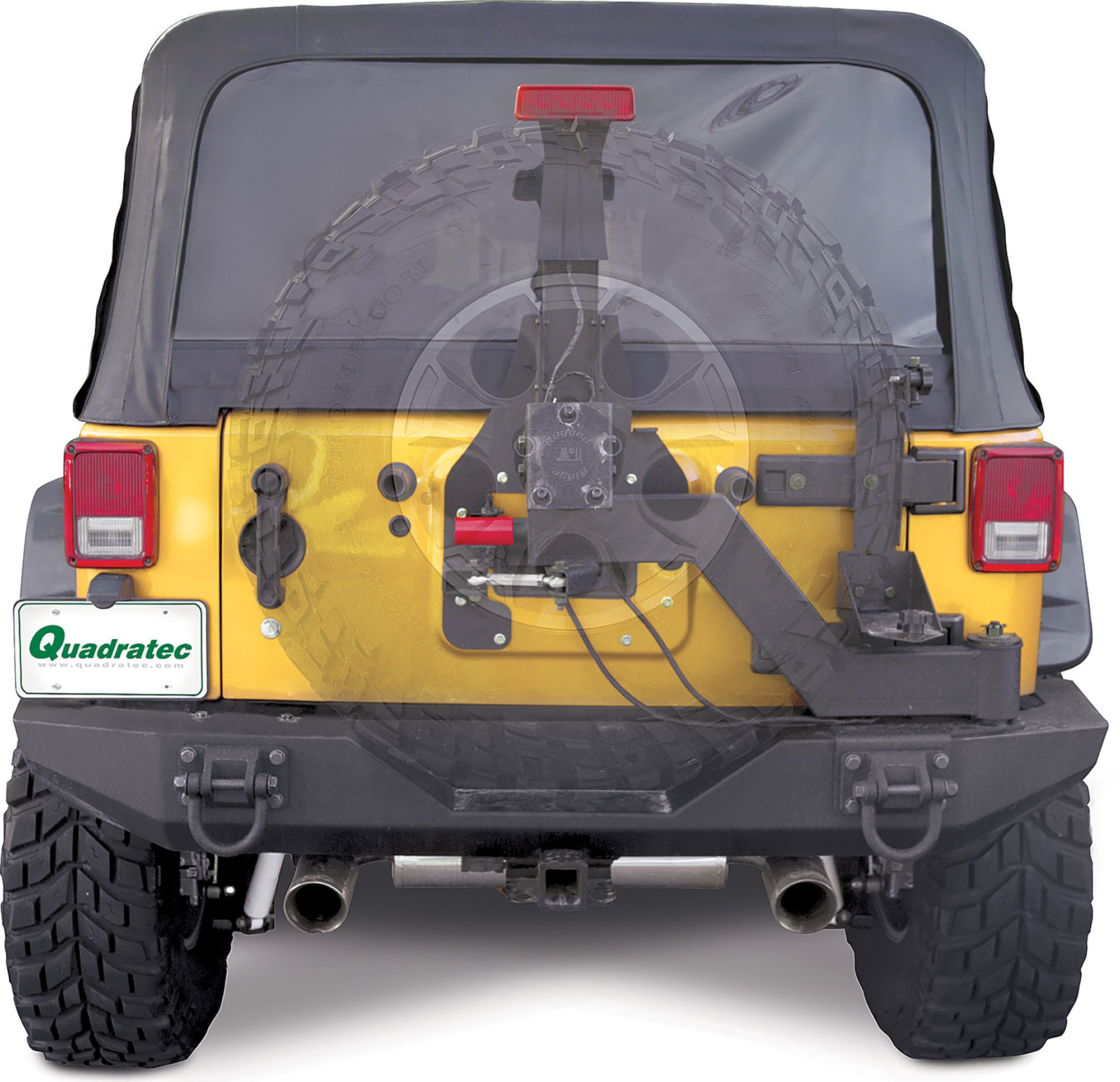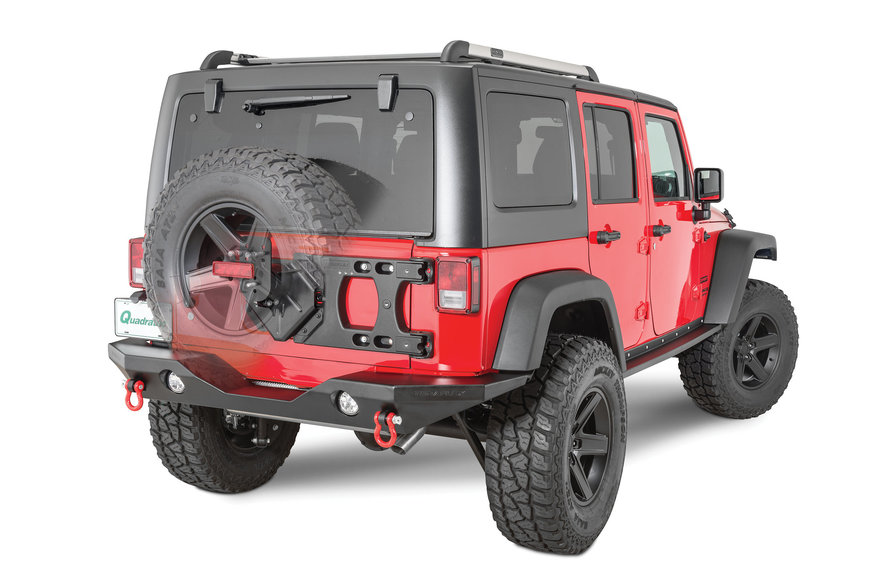by Eric Ammerman
Director of Creative Content
One of the design elements that sets a Jeep Wrangler apart from other vehicles is its rear-mounted spare tire. While it is not the only vehicle out there these days that wears a spare tire proudly on the rear tailgate, the Wrangler is without question the longest-running production vehicle to use a rear tire carrier.
No matter what year Wrangler you own, the engineers at Jeep designed that tire carrier specifically to hold the weight of a factory wheel and factory-sized tire — up to about a 33-inch tire. So, when you start adding larger tires and wheels on your Jeep, the sheer weight of that new spare will start pushing the limits of what your factory tire carrier was really designed to support.
With added weight comes added strain on your tailgate, and over time you may notice those latches no longer line up when it closes. The hinges will start to sag and in some extreme cases the mount may actually break and send your spare bouncing down the road.
This can be a frightening notion to some who have an eye on purchasing larger wheels and tires. But if you are in this category, don't worry, as the Jeep aftermarket has been offering solutions to this problem for many years — the rear-mounted spare tire carrier.

These tire carriers fall into two basic categories; bumper mounted tire carriers and tailgate reinforcement style versions.
The great thing about bumper-mounted tire carriers is that you can mount a super-heavy full size spare with almost no worry about damaging your tailgate. These carriers take the weight off tailgate hinges and move it to a large pivot point, usually on the right hand side of the bumper. Some feature independent latches that hold the carrier still in the closed position, while others (more commonly found on the 2007-2018 Wrangler JK) use a turnbuckle system that keeps the tire carrier swinging at the same rate as your tailgate, so you only have to use one handle to access rear storage.
The other main style is a tailgate reinforcement tire carrier. This product uses a thick metal bracket (sometimes steel, sometimes aluminum) to carry some of that extra load over to the hinges for a much stronger mount. In addition to the reinforcement brackets, you'll want a bracket that lifts the larger spare wheel up and further out from the factory location to keep that larger tire from hitting your bumper. Most carriers of this design for the Wrangler JL owner will additionally have wiring to relocate the rear-mounted camera.
Whichever way you choose when selecting a tire carrier, definitely make sure you pay attention to the product’s information to confirm it will work with your chosen size tire.





















